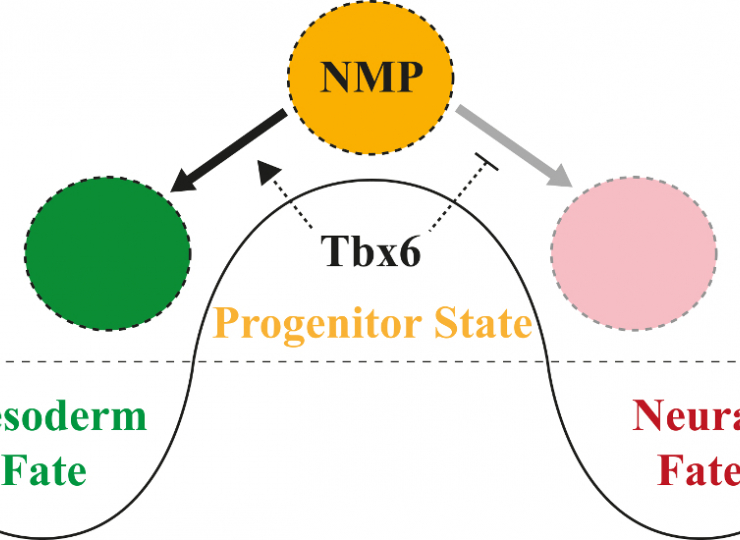As the main protective barrier from the external environment, our skin is frequently subjected to damage and injury and the long lasting evidence of this is the formation of scars. This scar is made of proteins deposited in the skin called the extracellular matrix (one of the most well-known of these being collagen). During wound healing, the synthesis of extra amounts of collagens and other extracellular matrix proteins is necessary to provide structural support to the injured skin while also serving as a scaffold to rebuild the damaged tissue. The job of producing collagen falls on the skin cells called fibroblasts.
Normally at the end of the wound healing response, these activated fibroblasts are switched off or eliminated, but under certain conditions these cells remain hyperactive for a prolonged period of time. This “over-scarring” condition where hyperactive fibroblasts produce too much collagen and other extracellular matrix proteins is called fibrosis. The overproduction of extracellular matrix proteins can lead to the hardening of the tissue which results in compromised tissue function or even organ failure.
Fibrosis can affect almost every organ of the body. Different fibrotic conditions include cystic fibrosis affecting the lungs, cardiac fibrosis which affects normal heart functioning after a heart attack, diabetic retinopathy which affects the eyes, and keloids in the skin. The widespread incidence of fibrosis is made evident by the fact that nearly a third of all deaths feature fibrosis as a contributing factor. Despite its prevalence there are no effective treatments to cure fibrosis and this underlies the need to understand fibrosis development in order to identify potential drug targets to combat the disease.
The challenge to understand fibrosis and potential therapeutic targets was spearheaded by Neha Pincha, a PhD student in the lFOM-inStem Joint Research Laboratory in Bangalore, directed by Professor Colin Jamora. In particular, Neha and colleagues sought out to understand how fibroblasts are normally turned on to secrete excessive amounts of collagen in order to understand potential mechanisms to turn them off.
Interestingly, a common feature of fibrotic tissues is inflammation. The team therefore hypothesized that the immune cells that are responsible for inflammation may also play a role in activating fibroblasts and keeping them on for an excessive amount of time. To test this hypothesis they utilized a genetically engineered mouse model that develops skin fibrosis. In humans, fibrosis in the skin is a disease called scleroderma. When compared to the normal skin, scleroderma skin appears highly thickened, which is indicative of excessive amounts of extracellular matrix proteins like collagen being secreted from the fibroblasts in the dermis. Their mouse model of skin fibrosis also exhibits this same symptom of the human fibrotic skin. Thus this team was in a position to utilize this mouse to perform experiments to understand the molecular mechanisms underlying fibrosis development.
Their experiments showed that the levels of a protein called the plasminogen activator inhibitor type 1 (PAI-1) is high in the fibrotic mouse skin compared to normal mouse skin. Although commonly known to function in the removal of blood clots during the wound healing process, PAI-1 has also been reported to be highly expressed in a multitude of human fibrotic diseases including cystic fibrosis, renal fibrosis, and liver fibrosis. But how a protein classically known to be involved in removing blood clots contributes to fibrosis is unknown.
To first test whether PAI-1 contributes to skin fibrosis, they removed the gene that encodes PAI-1 in their mouse model and asked whether the mice still developed skin fibrosis. Intriguingly, they observed that the removal of PAI-1 led to a significant block in the development of skin fibrosis. This observation then led them to investigate how PAI-1 promotes fibrosis development. Since their initial hypothesis was that inflammatory cells play a role in activating fibroblasts, members of the Jamora lab tested whether PAI-1 was reducing fibroblast activity by affecting the number of immune cells in the skin. They found that the amount of a particular type of immune cell called mast cells, are dependent upon PAI-1 in the fibrotic skin. Interestingly mast cells are best known for releasing compounds that induce inflammation such as histamine which causes an allergic reaction in the body, but they have also been observed to be present in high numbers in all fibrotic conditions. Neha and colleagues have now shown that PAI-1 can act as a substance that brings mast cells into the skin.
So the question which arises from this discovery was that what are these mast cells doing in the fibrotic skin? They had observed in the patients with the skin fibrotic condition called scleroderma that mast cells and fibroblasts are in close contact with each other. Similarly in their mouse model of skin fibrosis, the team saw that the mast cells form points of contact with the dermal fibroblasts as it does in human scleroderma skin. Moreover, PAI-1 was responsible for making mast cells and fibroblasts attach to each other resulting in the hyper activation of the fibroblasts which then produce excessive amounts of collagens. The attached mast cells themselves also get stimulated to secrete factors which in turn increases the number of activated fibroblasts.
These results were recently published in the Journal of Clinical Investigation under the title, “PAI1 mediates fibroblast–mast cell interactions in skin fibrosis”. This work has provided a breakthrough in the field by identifying new players in the progression of fibrosis development and thus provides important new information for therapeutic intervention which is currently sorely lacking to fight fibrosis.












